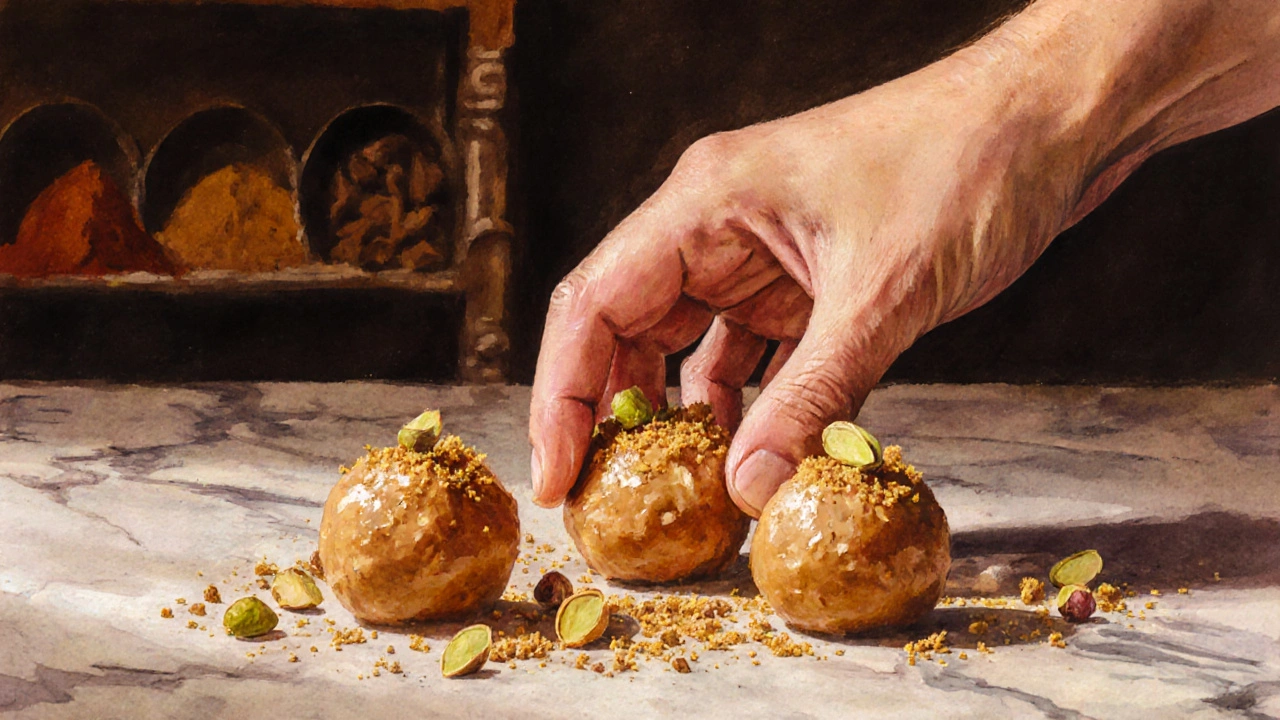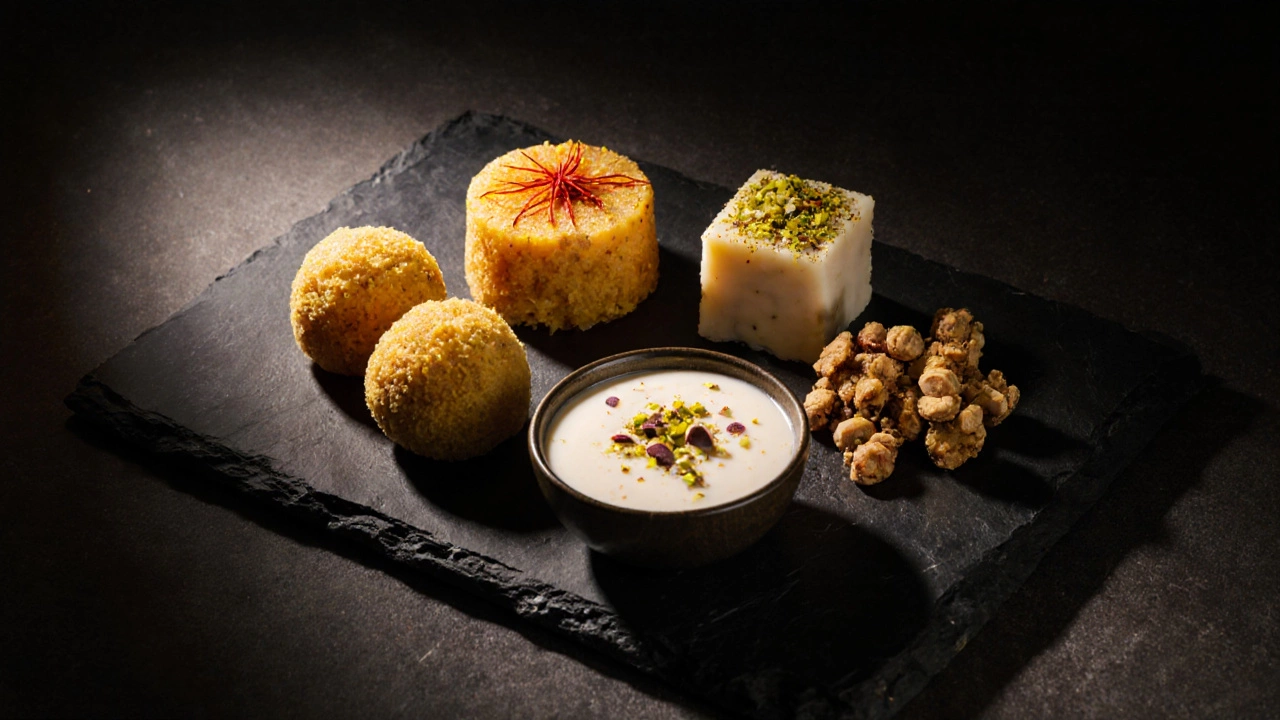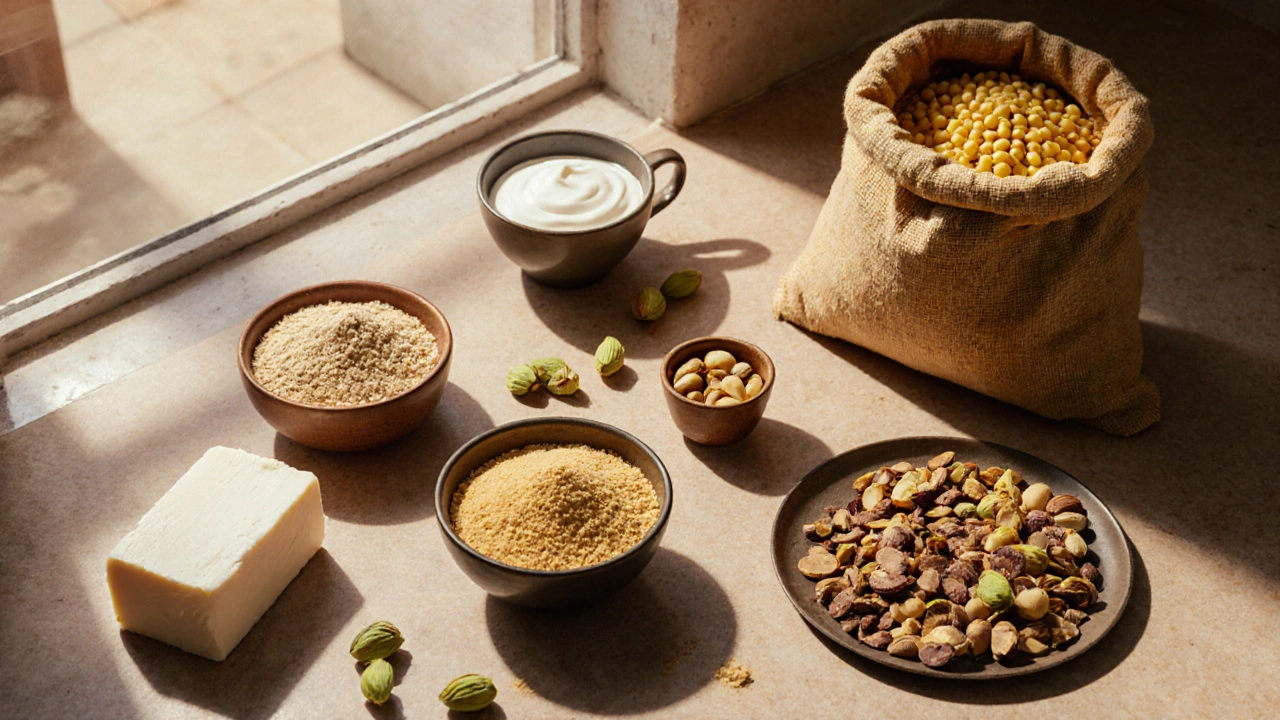Protein Sweet Calculator
Calculate Your Sweet's Nutrition
Ever wonder which Indian sweet can actually boost your protein intake instead of just adding empty calories? Most people think of gulab jamun or jalebi as pure sugar treats, but there are a handful of traditional desserts that pack a solid protein punch. Below you’ll find the top candidates, why they work, how to make them at home, and a quick side‑by‑side look at their nutrition.
What defines a high‑protein Indian sweet?
Protein is the building block for muscles, enzymes, and hormones. A sweet qualifies as “high‑protein” when it delivers at least 5g of protein per 100g serving - a threshold that separates it from the usual sugar‑heavy options. The key is choosing base ingredients that naturally contain protein, such as dairy, legumes, nuts, or soy.
Traditional Indian confectionery often leans on ghee, sugar, and refined flours, which are low in protein. By swapping out those components for paneer, chickpea flour (besan), soy milk, or Greek yogurt, you retain the familiar flavors while adding a nutritional edge.
Top protein‑packed Indian sweets
Each of the following sweets scores high on the protein chart and stays true to Indian taste traditions. The first three are marked up with schema.org microdata because they are the headline choices for anyone hunting a high protein Indian sweet.
Paneer Ladoo is a classic dessert where soft paneer (cottage cheese) is mixed with a little jaggery or honey, rolled into bite‑size balls, and optionally toasted with cardamom and chopped nuts. Paneer contributes roughly 18g of protein per 100g, making these laddoos one of the most protein‑dense sweets you can find.- Protein: ~14g per 100g serving
- Calories: ~200kcal
- Key flavors: Cardamom, pistachio, a hint of caramel
- Protein: ~12g per 100g
- Calories: ~180kcal
- Key flavors: Saffron, cardamom, toasted soy
- Protein: ~10g per 100g
- Calories: ~170kcal
- Key flavors: Cardamom, crushed pistachio, a hint of citrus zest
Other notable protein‑rich Indian sweets
If you want variety, these treats also rank well on the protein scale.
- Greek Yogurt Phirni: Thickened rice pudding made with Greek yogurt replaces most of the milk, adding roughly 9g of protein per serving.
- Almond Barfi: Ground almonds (badam) are blended with low‑fat milk and a sugar substitute, delivering about 8g of protein per 100g.
- Besan (Chickpea) Ladoo: Roasted gram flour combined with a touch of ghee and a natural sweetener yields around 7g of protein per 100g.
- Peanut Chikki: Roasted peanuts bound with jaggery create a crunchy candy that offers 6g of protein per 30g piece.

How to make a high‑protein sweet at home
Cooking these sweets yourself lets you control the sugar level and add extra protein boosters like whey or plant‑based protein powder.
- Choose a base ingredient that’s already protein‑dense (paneer, soy flour, moong dal, Greek yogurt, nuts).
- Measure the sweetener. Opt for natural alternatives such as stevia, erythritol, or a modest amount of honey to keep the glycemic load low.
- If the recipe calls for ghee, replace half of it with a light oil (like avocado or canola) to cut saturated fat.
- Add a scoop of unflavored whey or plant protein powder during the mixing stage. This boosts protein by 5-7g without altering flavor much.
- Shape the mixture into balls, squares, or ribbons while it’s still warm. Finish with a sprinkle of toasted nuts or seeds for crunch and extra micronutrients.
- Allow the sweets to set at room temperature or pop them in the fridge for a firmer texture.
Following these steps, you can turn almost any Indian dessert into a protein‑friendly snack that satisfies cravings and supports recovery after a workout.
Tips for fitting protein sweets into a balanced diet
- Portion control matters. Even a high‑protein sweet can push calorie intake over the line if you eat a whole plate.
- Pair a sweet with a source of healthy fat (like a few almonds) to slow sugar absorption.
- Use these sweets as post‑exercise treats when your body is primed to use the protein for muscle repair.
- Keep a log of your daily protein intake. If you already meet your targets, treat the sweet as a morale‑boosting snack rather than a primary protein source.

Quick comparison of protein content
| Sweet | Protein (g) | Calories (kcal) | Key Protein Source |
|---|---|---|---|
| Paneer Ladoo | 14 | 200 | Paneer |
| Soybean Halwa | 12 | 180 | Soy flour |
| Moong Dal Burfi | 10 | 170 | Moong dal |
| Greek Yogurt Phirni | 9 | 150 | Greek yogurt |
| Almond Barfi | 8 | 190 | Almonds |
| Besan Ladoo | 7 | 160 | Besan |
| Peanut Chikki | 6 | 210 | Peanuts |
Frequently Asked Questions
Frequently Asked Questions
Can I use low‑fat paneer for Paneer Ladoo?
Yes, low‑fat paneer works fine. It reduces saturated fat while still providing about 15g of protein per 100g. You may need a little extra sweetener to keep the texture pleasantly soft.
Is soy‑based halwa safe for people with soy allergies?
No. Anyone with a soy allergy should avoid Soybean Halwa and pick another high‑protein sweet, such as Paneer Ladoo or Moong Dal Burfi.
How long do homemade protein sweets keep?
Stored in an airtight container in the fridge, most of these sweets stay fresh for 5-7days. Freeze them for up to a month; just thaw at room temperature before serving.
Can I add whey protein to traditional recipes?
Absolutely. Mix an unflavored scoop into the batter after removing the mixture from heat. This prevents the protein from coagulating and keeps the texture smooth.
Do high‑protein sweets still count as desserts?
They do. They’re just smarter choices that let you enjoy the sweet side of Indian cuisine while meeting your daily protein goals.
